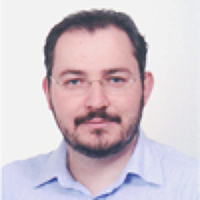Table of Contents
Inter-Observer Variability of a Commercial Patient Positioning and Verification System in Proton Therapy
Published on: 6th February, 2017
OCLC Number/Unique Identifier: 7286354964
Purpose:Accurate patient positioning is crucial in radiation therapy. To fully benefit from the preciseness of proton therapy, image guided patient positioning and verification system is typically utilized in proton therapy. The purpose of this study... is to evaluate the inter-observer variability of image alignment using a commercially available patient positioning and verification system in proton therapy.
Methods:The VeriSuite patient positioning and verification system (MedCom GmbH, Darmstadt, Germany) provides a six degrees of freedom correction vector by registering two orthogonal x-ray images to digitally reconstructed radiograph (DRR) images that are rendered in real time from the planning computed tomography (CT) images. Six cases of various disease sites, including brain, head & neck, lung, prostate, pelvis, and bladder, were used in this study. For each case, the planning CT images and a daily orthogonal x-ray portal image pair were loaded into the VeriSuite system. The same set of x-ray images and CT images for each case were reviewed and aligned separately by each of the 10 radiation therapist, following the clinical procedure for the corresponding disease site. The resulting correction vectors were then recorded and analyzed.
Results:Our study shows that the inter-observer variation (One standard deviation) in image alignment using the VeriSuite system ranged from 1.2 to 2.0 mm for translational correction and from 0.6 to 1.3 degrees for rotational correction for the six cases. The use of fiducial markers for prostate patient alignment achieved the least inter-observer variation while the bladder case produced the largest.
Conclusions:Inter-observer variation in image alignment could be relatively large, depending on the complexity of patient anatomy, image alignment approach, and user experience and software limitations. Automatic registration and fiducial markers could potentially be used to align patient more accurately and consistently. To ensure adequate tumor coverage in proton therapy, inter-observer variability in patient alignment should be carefully evaluated and accounted for in patient setup uncertainty analysis and treatment planning margin determination. Show more >
Using Mathematical Procedure to Compute the Attenuation Coefficient in Spectrometry Field
Published on: 6th February, 2017
OCLC Number/Unique Identifier: 7286351538
In gamma-ray spectrometry, the analysis of the environmental radioactivity samples (soil, sediment and ash of a living organism) needs to know the linear attenuation coefficient of the sample matrix. This coefficient is required to calculate the self... -absorption correction factor through the sample bulk. In addition, these parameters are very important because the unidentified samples can be different in the composition and density from the reference liquid sources which are usually used for efficiency calibration in the radioactive monitoring process. The present work is essentially concerned to introduce a mathematical method to calculate the linear attenuation coefficient without using any collimator. This method was based mainly on the calculations of the effective solid angle subtended by the source-to-the detector configurations, the efficiency transfer technique and the average path lengths through the samples itself. The method can be used as a tool for the calculation of the linear attenuation coefficient of unidentified materials with good facility to use it in the calibration process of γ-ray detectors, particularly in the study of soil samples. The results are compared with the data from NIST-XCOM to show how much the results are in close agreement and to give the validity of the approach. Show more >
Empirical formulae for calculating γ-ray detectors effective solid angle ratio
Published on: 27th January, 2017
Determination of the detector efficiency using volumetric cylindrical sources is very important in various scientific and industrial fields, especially in the field of quantitative analysis. To calculate the absolute activity of any sample, the full-... energy peak efficiency (FEPE) of the detector is needed. By applying the efficiency transfer method, the FEPE of the detector would be determined easily without using the standard sources. This approach depends on two main factors. The first one, is the reference efficiency of the reference source, which is determined experimentally, and the second one, is the calculation of the effective solid angle ratio between the sample and the reference source geometries. This work introduces an empirical formula for calculating the second factor for using two different sizes of NaI(Tl) detectors. The validity of this empirical formula was successfully demonstrated by comparing the calculating values with the experimental values. Show more >
New Approach for Analysing the Discrepancy of Pretherapeutic Tc-99m and Intra-therapeutic I-131 uptake in Scintigraphies of Thyroid Autonomies using a Parametric 3D Analysis Program
Published on: 2nd January, 2017
OCLC Number/Unique Identifier: 7286427358
Introduction: Radioiodine therapy is a standard procedure in thyroid autonomy treatment. Discrepancies in the visual comparisons of the scintigraphies prepared for this purpose using Tc-99m-O4- and I-131 have been known for years. In this study a new... method is used to calculate and perform a quantitative comparison of both uptakes using subtraction analysis and 3D imaging. The results and their causes are discussed together with practice-relevant conclusions for better clinical results.
Material and Methods: The new method was used in 38 patients with thyroid autonomies for the subtraction analysis of standardized pretherapeutic and intratherapeutic scintigraphies. The parametric distribution of activity was calculated absolutely and as a percentage and displayed three-dimensionally. These results were compared with the visual assessment of the different scintigraphies by the experts. Inclusion criteria were pretherapeutic and intratherapeutic hyperthyroidism without medication affecting the thyroid. The time difference between acquiring the scintigraphies was 28 days maximum.
Results: Activity distribution was visually discrepant in 39.5% of cases. 60.5% displayed comparable uptake. The calculated values showed reversed results after applying the new method. The results using our method show a higher rate of calculated discrepancies compared with visual analysis.
Conclusion: Accurate functional imaging of the thyroid is next to further aspects very important in establishing the diagnosis and deciding about the therapy activity for thyroid treatment. In combination with clinical symptoms and laboratory values, Tc-99m-O4 - scintigram can be used for an orientated, preliminary assessment of functional disorders of the thyroid. But because of the higher rate of found discrepancies, the solely use of Tc-99m-O4 - scintigram is not always capable for exact and reliable diagnosis. The known reason for this is most probably due to the different biokinetics of both radiopharmaceuticals, which can be imaged more sensitively with this method. Consequently, a scintigram should be performed in the pretherapeutic radioiodine uptake test. Despite higher costs and radiation exposure, alternatively, pretherapeutic use of other diagnostic iodine isotopes like I-123 or -124 should be discussed, because they could overcome the limitation of the different biokinetics. Following this approach the preliminary assessment using Tc-99m-O4 - scintigraphy can be precised and double checked to improve diagnostic confi dence and treatment results for a better outcome of the patients.
Show more >

HSPI: We're glad you're here. Please click "create a new Query" if you are a new visitor to our website and need further information from us.
If you are already a member of our network and need to keep track of any developments regarding a question you have already submitted, click "take me to my Query."

















































































































































